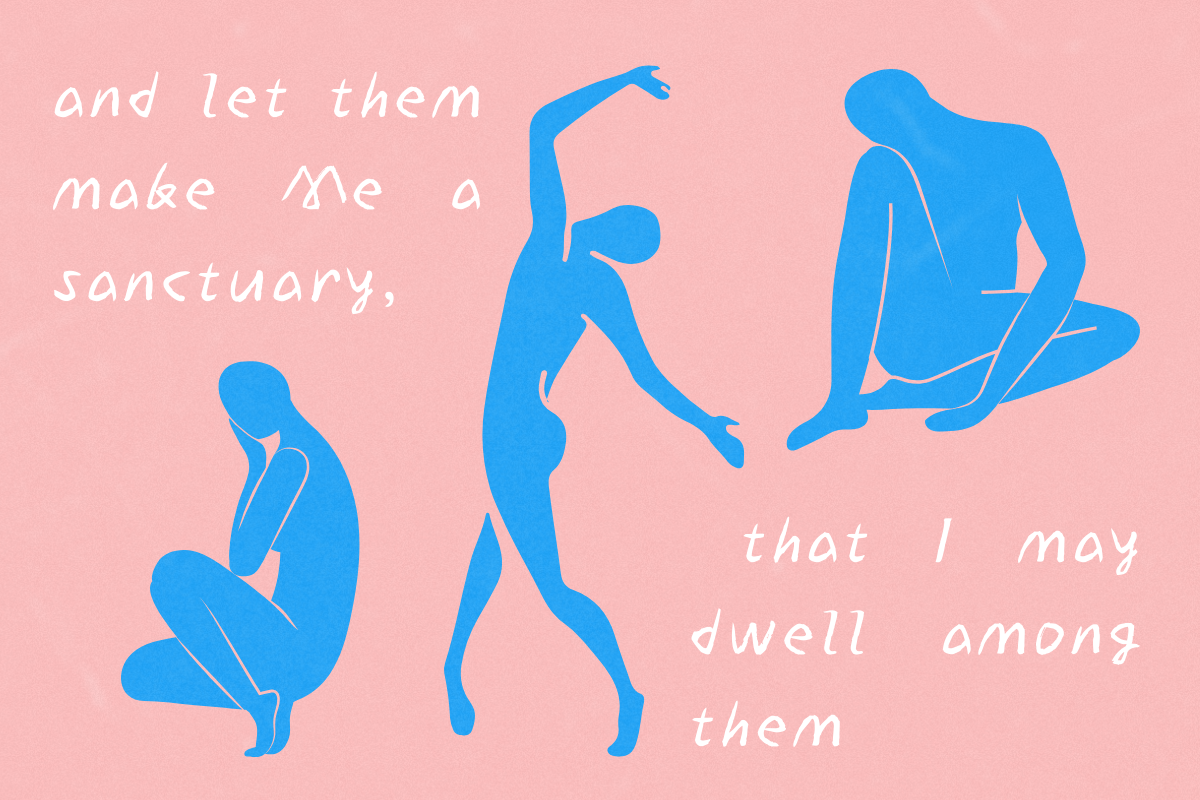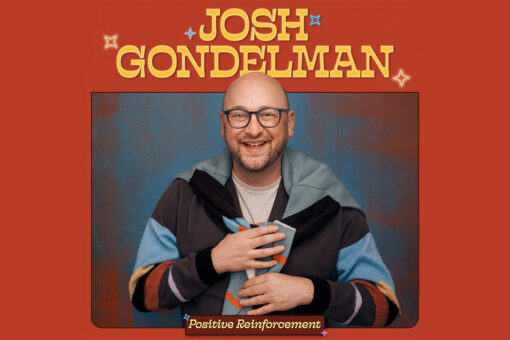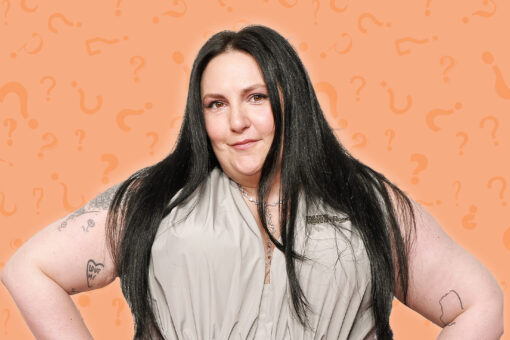Some months ago, I received an email from the d’var Torah coordinator at my synagogue, asking if I would consider drashing, or sharing words of Torah, for Parshat Terumah in February. “It concerns itself mostly with the building of the Tabernacle,” she wrote.
I hesitated. I knew I would be recovering from top surgery at that time, and was unsure if I’d feel up to the task of standing and speaking in front of my synagogue. Always curious about what our Torah has to say, I took a glance at the portion anyway.
Terumah begins with God commanding Moses to tell the children of Israel to make God an offering: the holy tabernacle. It lists the beautiful stones, fabrics and colors the wanderers should use to build this portable space for worship, and includes an infamous line: “And let them make Me a sanctuary, that I may dwell among them.”
Torah commentators — from the 16th century through the 20th — have repeatedly seen this line as a call for the reader to also prepare themself to be a sanctuary. They claim that building the tabernacle is not only about making a home for the Shekhinah, but is also a process for the Israelites to undergo for themselves, to be ready to accept and comprehend having physical proximity to the divine presence.
The 13th-century Sefer HaChinuch, or book of education on the 613 commandments, reads: “Know, my child, that any commandment that God requires of humankind comes only out of God’s desire to benefit us… God’s command to build the Tabernacle, for us to offer therein our prayers and sacrifices, comes not out of God’s needs to dwell in an earthly dwelling among humankind, but rather [out of God’s awareness that we need] train our own selves… “
Malbim, a 19th-century commentator from Eastern Europe, expanded on this, writing: “… Each one of us needs to build God a Tabernacle in the recesses of our hearts, by preparing oneself to become a Sanctuary for God and a place for the dwelling of God’s glory.”
And in 1982, gospel composer John W. Thompson and Grammy-winning producer, songwriter and composer Randy Scruggs, published “Sanctuary,” based on this concept: “Oh Lord prepare me / to be a sanctuary / pure and holy, tried and true / and with thanksgiving / I’ll be a living / sanctuary for you.”
I realized that to be concerned with the creation of the tabernacle was to be aware of the holiness within oneself. And that throughout the year, our tradition has within it routine ways of preparing ourselves to be such a vessel — whether that’s by donning tzitzit and tefillin during Shabbat or daily prayers, immersing in the mikveh prior to status-altering life cycle events or the completion of routine bodily functions, blessing the food we eat and the cleaning of the hands we use to do so or fasting as a way to refocus on God and not on our bodily needs on Yom Kippur.
Having a connection to or with our bodies is a large, underlying piece of finding our Jewish way. But as a person with a fraught relationship with my physical self, I’ve been on a long journey to access this form of holiness.
I remember searching, back in high school, for Jewish texts or rituals that might help me find a connection with my body. I was a perfectionist athlete and honors student with large amounts of external and internal pressure — the perfect recipe for an eating disorder. I sought insights, teachings and philosophies into whether our tradition had anything to say about what it meant to punish yourself for having a body by not feeding it. I wasn’t able to find any rituals or practices that resonated.
Many years have passed since then. For as many years as I felt I was in a narrow place, I’ve spent almost as many years working to climb out of it. And finally, a few years ago, I was able to start piecing together the incongruous facets of my bodily discomfort, to start separating the parts that were disconnected from weight and control and to really ask: What do I need to feel at home?
Realizing I am non-binary started to help me answer that question. And this time, as I questioned what I should do or how to be Jewish with my identity — how to embody Jewish tradition as myself — I was surrounded by community.
There’s been an incredible movement towards providing gender neutral options for aliyahs, which my Conservative synagogue offers with ease. There’s been the creation of radical queer projects like SVARA, a “traditionally radical yeshiva” that aims to make traditional Jewish study accessible to marginalized Jews. SVARA also piloted the Trans Halacha Project and two resources: a series of Teshuvahs — halakhic Q&As — and Tefillat Trans — a compilation of blessings and rituals for sacred moments.
Tefillat Trans is a celebration of all bodies and all bodily relationships, with blessings for coming out, for being non-binary, for experiencing gender euphoria, for taking hormones, for delays and disappointments, for protection while traveling in this hostile country.
There are also rituals for new names, for marking the days of healing, for mikvahs prior to having gender-affirming surgery. Each of these blessings and rituals include an explanation for how it was conceived. The majority of them are based in another embodied Jewish blessing or ritual, and use our existing words such as frameworks. One takes its structural formatting from the prayer for putting on tzitzit. Another for kiddush and hamotzi. Another follows the traditions we’ve applied to saying Mi Sheberach.
Tefillat Trans offers people who may feel distanced from or out of alignment with their bodies to get closer to the traditional offerings we as Jews have to build a tabernacle in ourselves. It is an opportunity for reclamation, in the words and the rhythms we hold dear. It is an acknowledgement that we cannot build this tabernacle if we are not truly, fully, ourselves.
I had long kept an underlying desire — top surgery — at bay by convincing myself that I could not even consider it until I could identify the ways my gender and my eating disorder had been linked together. But after years of reckoning and recovering, of grappling with self image and self care, I was ready. I spent a year after the consultation waiting for my surgery date.
Now, after six weeks of recovery, I have started to truly feel at home in my body.
So during Parshat Terumah, I shared much of this story and said two pieces from Tefillat Trans in front of my synagogue community. The Israelites were tasked to build the tabernacle together. And like them, we access this tradition for ourselves — but not by ourselves.



